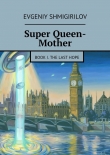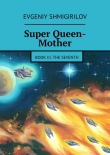
Текст книги "The gravity paradigm. Extraterrestrial civilizations. Series: Physics of a highly developed civilization"
Автор книги: Evgeniy Tikhomirov
сообщить о нарушении
Текущая страница: 2 (всего у книги 2 страниц)
3. Brief information about the structure of the substance
Due to the fact that the physics of a highly developed civilization is a whole science, and not, like us, earthlings, cut into separate pieces that are not connected with each other, it is necessary to say a few words about the structure of substance and correct mistakes. We noted above that our terrestrial science surprisingly coincides with the information of a highly developed civilization in terms of the structure of substance. Scientists have correctly established that matter consists of atoms, which, in turn, consist of its stable isolated elementary particles: protons, neutrons and electrons. Protons and neutrons are closer to the center of the atom, and electrons are far away from them-at the outer boundary of the atom. Such a correct description of the internal structure of matter is a major achievement of terrestrial science. This achievement is due to scientists adhering to the classical methodology of scientific research, such as Faraday, Soddy, Rutherford and others.
However, scientists have an unfortunate error in the structure of substance. So it is believed that protons and neutrons are concentrated inthe center of the atom in the so-called "nucleon nucleus". To prevent the nucleon nucleus from being torn apart by static electricity of the same charges and for its stability, hypothetical intranuclear exchange interactions with a total number of up to four are introduced, the most important of which is the "strong interaction". According to a highly developed civilization, the nucleus of an atom is a separate elementary particle, around which protons and neutrons revolve in low orbits (very close to the nucleus), and electrons – in high orbits (very far from the nucleus), so no intra-nuclear exchange interactions do not exist in nature. In 2018, we made a physical discovery about the atomic nucleus as a separate elementary particle, which was published in the scientific reference international journal "Science through the prism of time" [1]. The discovery was made, of course, without any reference to the information of a highly developed civilization.
The second mistake, or rather incompleteness in the description of the atom, is that scientists at accelerators have discovered a large number of elementary particles, but still have not established the smallest particle of the atom, which is no longer divided. The role of such an indivisible particle in quantum mechanics is played by the electron. This, of course, is incorrect and illogical. If an electron is a quantum of matter, then, what is a neutrino? According to the information of a highly developed civilization, substance (elementary particles) consists of a specially structured community of the smallest corpuscles of two matters. Corpuscles of both materials have sub elementarily partial dimensions, are eternal, indivisible, indestructible, and have radically different properties. So, corpuscles of negative (dark) matters have the property of repelling each other, and each single corpuscle has the property of inertia, which means that it obeys Newton's second law. This, by the way, once again confirms that there are no tidal forces in nature, fictional E. Rocha and therefore there is no limit Rocha. Since each negative (dark) matter corpuscle has inertia, then the negative dark matter corpuscle itself is a quantum (the smallest portion) of mass, and the inertia forces arise, of course, not in the center of mass of the body, but in each smallest negative matter corpuscle, which are part of elementary particles. Thus, a single corpuscle of negative (dark) matter is a quantum (the smallest portion) of mass. Corpuscles of positive (light) matter do not have the property of repelling, but, on the contrary, form stable structures, connecting with each other in a special way (how exactly is not important here and will be discussed in other books). The next property of positive matter is that its corpuscles have no mass, therefore, when they move, Newton's second law is not observed.
Конец ознакомительного фрагмента.
Текст предоставлен ООО «ЛитРес».
Прочитайте эту книгу целиком, купив полную легальную версию на ЛитРес.
Безопасно оплатить книгу можно банковской картой Visa, MasterCard, Maestro, со счета мобильного телефона, с платежного терминала, в салоне МТС или Связной, через PayPal, WebMoney, Яндекс.Деньги, QIWI Кошелек, бонусными картами или другим удобным Вам способом.








